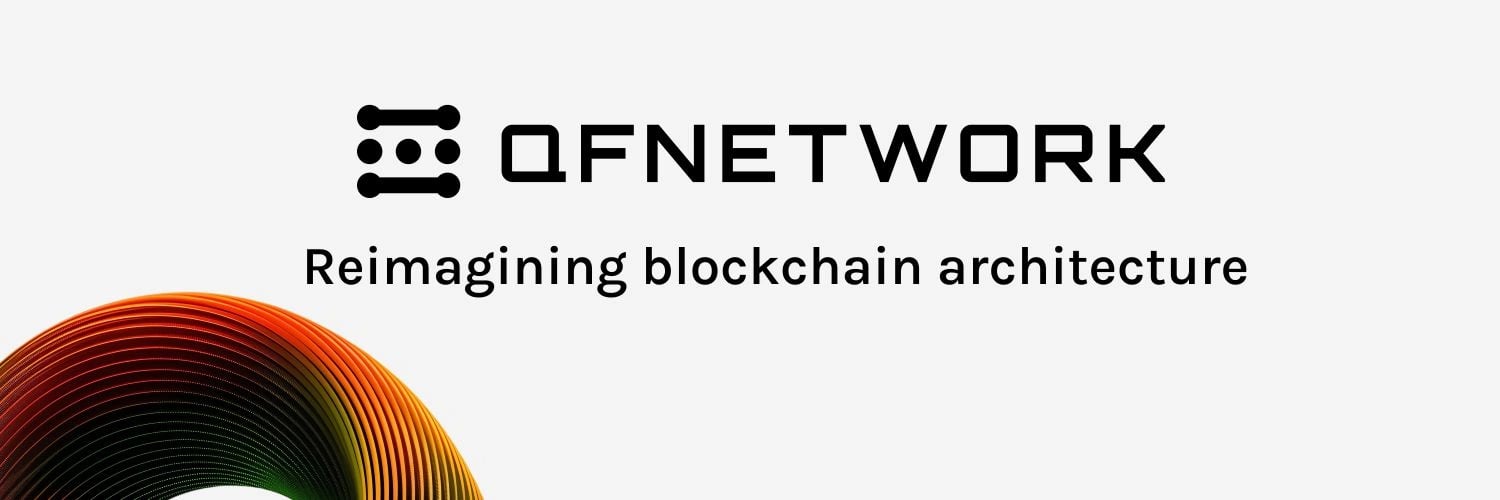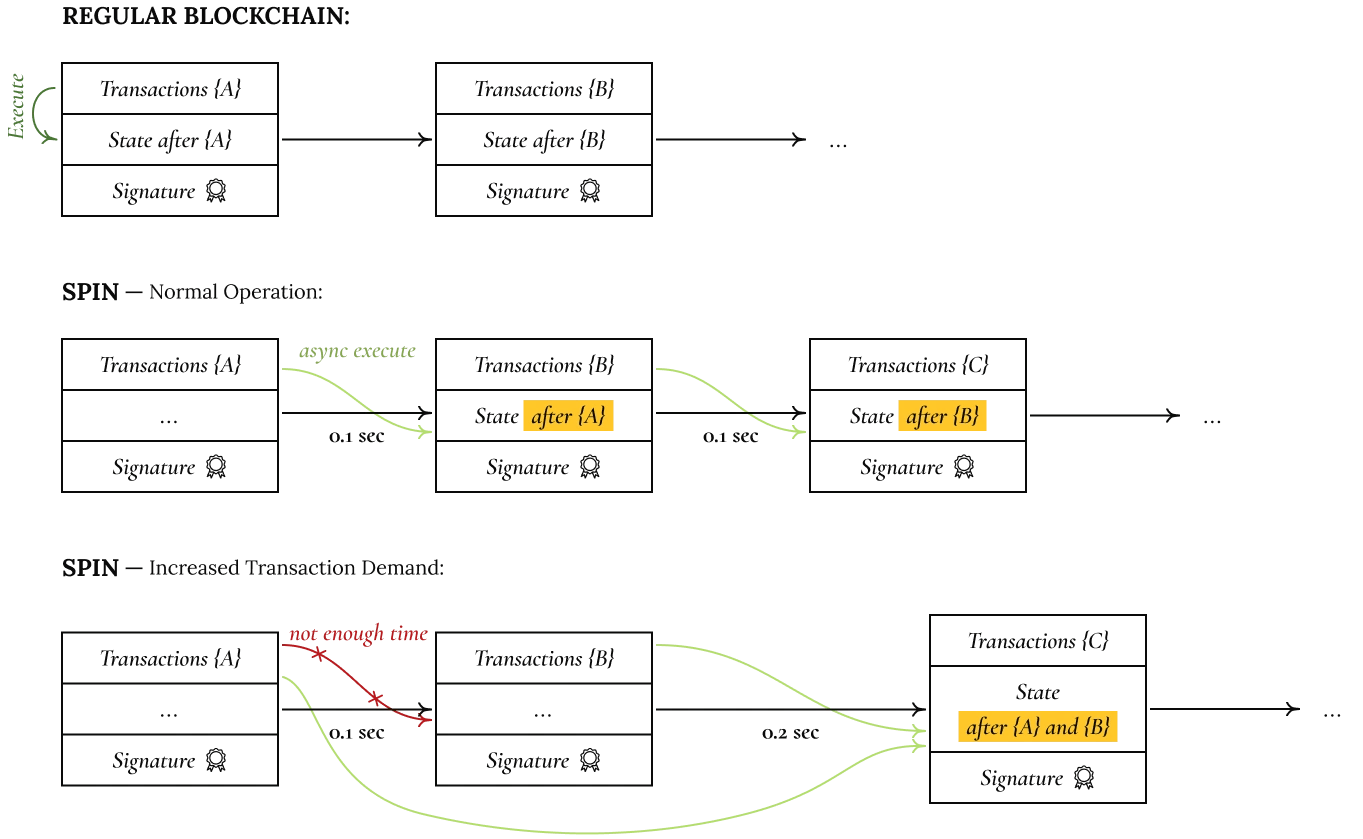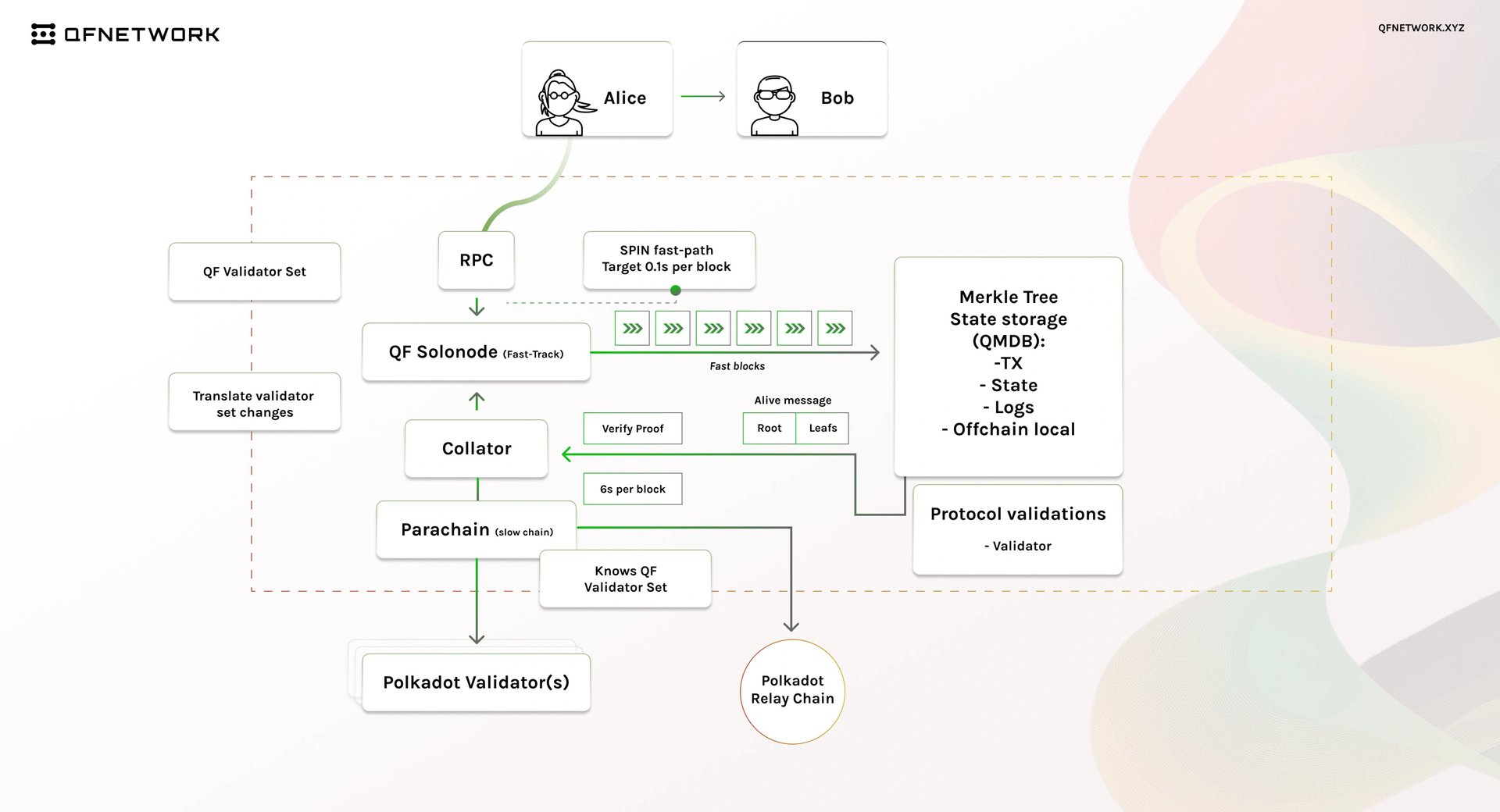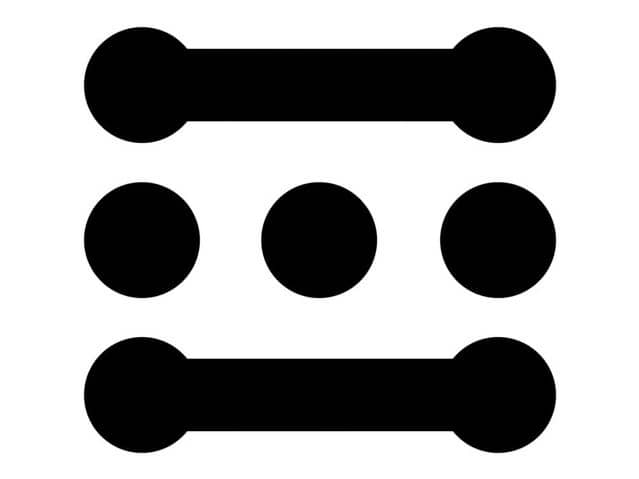위키 구독하기
Share wiki
Bookmark
Quantum Fusion Network
Quantum Fusion Network
**퀀텀 퓨전 네트워크(QFN)**는 속도와 사용성에 중점을 둔 분산 애플리케이션(dApps)을 위해 설계된 레이어 1 블록체인 플랫폼입니다. 기존 블록체인의 한계를 해결하여 dApps의 주류 채택을 촉진하는 것을 목표로 합니다. [2]

개요
퀀텀 퓨전 네트워크(QF 네트워크)는 분산 애플리케이션의 성능, 확장성 및 사용성 과제를 해결하는 블록체인 플랫폼입니다. Substrate 프레임워크를 기반으로 구축되어 여러 가지 고급 기술을 결합하여 1초 미만의 블록 시간, 높은 트랜잭션 처리량 및 효율적인 스마트 계약 실행을 가능하게 합니다. 여기에는 빠른 최종성을 위한 SPIN 합의 프로토콜, 고성능 계약 처리를 위한 PolkaVM 및 실시간 응답성을 지원하는 병렬 트랜잭션 처리가 포함됩니다.
QF 네트워크는 네이티브 우선 SDK와 검증 가능한 오프체인 작업자를 통해 복잡한 계산을 통합하기 위한 도구를 제공하여 접근성과 개발자 지원을 강조합니다. 또한 안전한 Web2 데이터 상호 작용을 위해 zkTLS를 지원하고 네트워크를 중단시키지 않고 지속적인 개선을 가능하게 하는 포크리스 런타임 업그레이드를 사용합니다. 모바일 및 라이트 클라이언트에 최적화된 이 네트워크는 Web2 사용자의 기대치와 Web3 기능 간의 간극을 해소하기 위해 낮은 대기 시간 통신을 위해 nQUIC 및 WebRTC를 사용하면서 분산화를 유지합니다. [1] [2] [4]
기술
SPIN 합의
SPIN 합의 프로토콜(단기 병렬 증분 네트워크 합의)은 퀀텀 퓨전 네트워크(QFN)가 기존 지분 증명(PoS) 설정보다 더 빠른 블록 최종성과 더 큰 유연성을 달성하는 데 사용하는 맞춤 메커니즘입니다. Polkadot의 합의 및 더 긴 최종성 시간(12~18초)에 완전히 의존하는 대신, QFN은 검증자를 사용하여 경량 최종성 가젯을 실행하여 0.1초의 블록 시간을 목표로 하고 개발자가 트랜잭션 유형에 따라 다양한 수준의 보안을 선택할 수 있도록 합니다.
QFN은 향상된 보안 및 최종 블록의 검증을 위해 Polkadot의 인프라를 활용하지만, 자체 합의 시스템을 유지함으로써 일반적인 레이어 2가 되는 것을 피합니다. 이러한 하이브리드 접근 방식을 통해 QFN은 고가치 트랜잭션과 같이 필요한 경우 Polkadot에 블록을 선택적으로 “승격”시키면서 속도와 사용성을 유지할 수 있습니다. [1] [5]

시퀀싱 및 실행
퀀텀 퓨전 네트워크는 병렬 처리를 가능하게 하고 전반적인 속도를 향상시키기 위해 트랜잭션 시퀀싱을 실행과 분리합니다. 블록은 네트워크 상태를 즉시 업데이트하지 않고 유효한 트랜잭션을 정렬하여 생성되므로 필요한 경우 병렬로 또는 지연 후에 실행될 수 있습니다.
이러한 설계는 트랜잭션 실행이 지연되더라도 일관된 블록 생성을 보장합니다. 블록 생성 마감일은 시스템 무결성을 유지하기 위해 동적으로 조정되며, 실행이 지연되면 증가하고 동기화가 복원될 때까지 블록 용량이 감소합니다. 이러한 접근 방식은 이기적인 MEV 전략의 실행 가능성을 최소화하고, Substrate의 유연성으로 인해 블록 시간과 같은 시스템 매개변수를 하드 포크 없이 미세 조정할 수 있습니다. [1]
PolkaVM
PolkaVM은 퀀텀 퓨전 네트워크의 스마트 계약 실행 환경입니다. 고성능, 저지연 실행을 가능하게 하는 RISC-V 명령어 세트를 기반으로 구축되었습니다. 사용자 지정 사전 컴파일 함수와 포크리스 업그레이드를 지원하므로 네트워크에서 필요에 따라 영지식 증명 검증 또는 블록체인 브리징과 같은 고급 기능을 도입할 수 있습니다.
PolkaVM을 통해 개발자는 분산 애플리케이션 개발의 유연성을 지원하기 위해 내장 함수에만 의존하는 대신 상태 전환을 독립적으로 정의할 수 있습니다. 또한 기존 Solidity 코드를 최소한의 수정으로 마이그레이션할 수 있도록 EVM 호환성 계층이 포함되어 있습니다. 에뮬레이션으로 인해 약간의 오버헤드가 발생하지만 전반적인 시스템 속도는 다른 체인의 네이티브 EVM 성능을 여전히 능가할 수 있습니다. [1]
네트워킹
퀀텀 퓨전 네트워크는 통신을 최적화하기 위해 nQUIC 및 WebRTC라는 두 가지 네트워킹 프로토콜을 사용합니다. nQUIC은 HTTP/3에 사용되는 표준 QUIC 프로토콜의 수정된 버전으로, 중앙 집중식 TLS 키 교환을 분산형 NOISE 프로토콜로 대체하여 피어 투 피어 환경에 맞게 조정되었습니다. 이를 통해 QFN 노드는 개인 정보 보호 및 검열 저항성을 유지하면서 최신 인터넷 인프라의 이점을 누릴 수 있습니다.
브라우저 및 라이트 클라이언트의 경우 QFN은 일반적으로 비디오 및 게임 애플리케이션에 사용되는 널리 채택된 피어 투 피어 프로토콜인 WebRTC에 의존합니다. 이러한 접근 방식을 통해 DNS 또는 HTTPS 인증서와 같은 중앙 집중식 구성 요소가 필요 없으므로 성능이나 브라우저 기반 환경과의 호환성을 저해하지 않고 분산형 통신을 가능하게 합니다. [1]
Cap'n Proto
QFN의 RPC 계층은 속도, 압축성 및 효율성으로 인해 기존 JSON-RPC보다 선택된 고성능 바이너리 기반 프로토콜인 Cap'n Proto를 사용합니다. Cap'n Proto는 제로 복사 디코딩을 허용하므로 네트워크에서 수신된 데이터를 사용하기 전에 변환할 필요가 없습니다. 또한 프로미스 파이프라이닝을 지원하므로 스마트 가전 제품과 같은 장치가 각각 완료될 때까지 기다리지 않고 종속 쿼리를 연결하여 응답성과 리소스 사용량을 개선할 수 있습니다.
중앙 집중식 아키텍처를 피하기 위해 QFN은 로컬 우선 RPC 검색을 목표로 합니다. 중앙 집중식 DNS에만 의존하는 대신 SDK는 UDP 브로드캐스트, mDNS 또는 UPnP를 사용하여 근처의 QFN 노드(예: 사용자의 랩톱에서 실행되는 노드)에 연결하는 것을 우선시합니다. 중앙 집중식 RPC 서버는 여전히 대체로 사용될 수 있지만(예: 장치 제조업체에서), 분산화와 성능이 주요 설계 목표로 남아 있습니다. [1] [6]

QF
QF는 트랜잭션 처리 및 데이터 저장에 대한 수수료를 지불하는 데 사용되는 네트워크의 기본 유틸리티 토큰입니다. 또한 거버넌스 토큰 역할을 하여 보유자가 네트워크 변경에 대한 의사 결정에 참여할 수 있도록 합니다. QF의 총 공급량은 1000만 토큰입니다. [3] [7]
파트너십
- Pantheon
- PalmAI
- NFINITY AI
- Messier M87
- AstraAI
- PolkaVM
- LayerZero
- Shadow Node
- AIgentX
잘못된 내용이 있나요?
